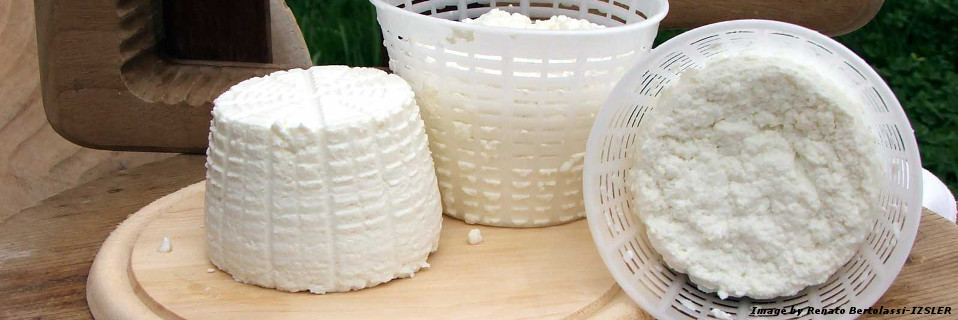Search
Short communication: Arcobacter butzleri and Arcobacter cryaerophilus survival and growth in artisanal and industrial ricotta cheese

26/01/2017
F. Giacometti,* M. N. Losio,† P. Daminelli,† E. Cosciani-Cunico,† E. Dalzini,† and A. Serraino*
*Department of Veterinary Medical Sciences, University of Bologna, Ozzano Emilia, 40064 Bologna, Italy
†Experimental Institute for Zooprophylaxis in Lombardy and Emilia Romagna, 25124 Brescia, Italy
J. Dairy Sci. 98:6776–6781
© 2015 American Dairy Science Association. Ricotta cheese is a ready-to-eat product with properties (pH >6.0, aw >0.98-0.99) and moisture content (75-80%) that may pose a risk to public health due to postprocess contamination by several bacterial pathogens, including Arcobacters. The objective of the study was to evaluate the behavior of Arcobacter butzleri and Arcobacter cryaerophilus in ricotta cheese during its shelf life assuming postprocessing contamination. Two types of ricotta cheese, artisanal water buffalo (WB) and industrial cow milk ricotta cheese, were experimentally contaminated with A. butzleri and A. cryaerophilus and the count was monitored at 2 different temperatures (6°C and 12°C) during shelf life of 5 d for WB cheese and 22 d for industrial ricotta cheese. In WB ricotta cheese the A. butzleri count remained stable during the 5 d of storage at 6°C, whereas a moderate but significant decrease was observed in A. cryaerophilus count. The counts of both species increased when WB ricotta cheese was stored at 12°C. In industrial ricotta cheese stored at 6°C, a significant reduction was observed both in A. butzleri and A. cryaerophilus counts during the 22-d storage period; at 12°C storage, a count increase was observed for both Arcobacter species up to d 14 of storage after which the log cfu/g count resulted constant until d 22 of storage. The ability of A. butzleri and A. cryaerophilus to survive at 6°C and to grow at 12°C in ricotta cheese has significant food safety implications.

